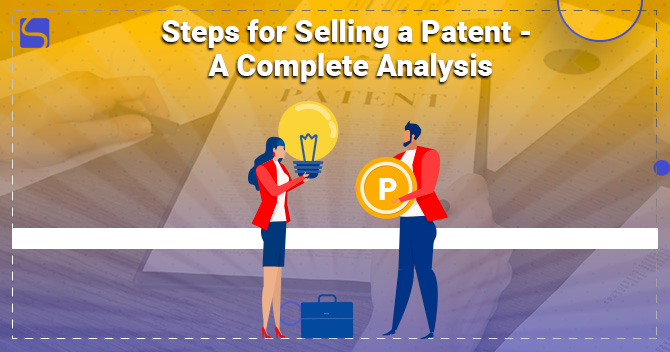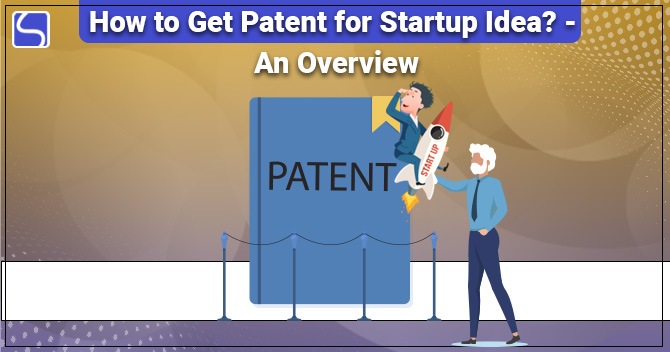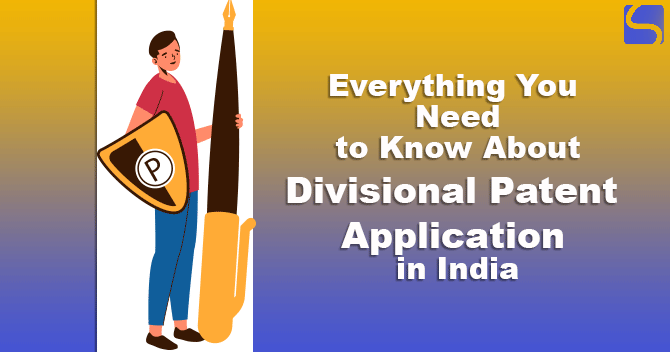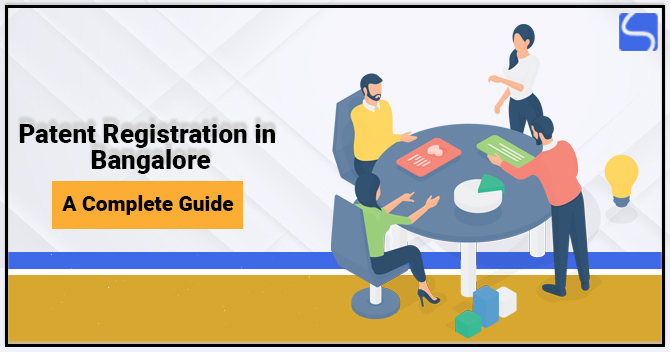Steps for Selling a Patent – A Complete Analysis

Karan Singh | Updated: Feb 22, 2022 | Category: Patent
A Patent is one of the most integral parts of the innovation process as it opens up a few opportunities for an innovator. First, it provides the ownership of the invention onto the innovator, thereby safeguarding the idea from the infringer. After that, it gives exclusive rights to the inventor for its utilisation. And consequently, it identifies the steady hard work for months/years that an innovator has put in to create or make something that never existed before. In this write-up, we will discuss different steps for selling a Patent.
However, owning a Patent is just the starting; how one is able to use this safeguarded innovation is dominant. While the utilisation aspect may vary from one innovator to another, one can either license or sell it to others or market a product based on the underlying invention.
Table of Contents
What do you mean by a Patent?
Before we discuss different steps for selling a Patent, let’s understand the meaning of Patent. A Patent is an integral part of Intellectual Property (IP) that provides its owner with the legal right to exclude or eliminate others from making, using, or selling an invention for a limited period in exchange for publishing or advertising an enabling disclosure of the invention.
The procedure for Patent Registration, requirements placed on the Patentee or Patent owner, and the extent of the exclusive rights vary extensively between nations as per the National Laws and International Agreements. Typically, a Patent application must comprise one or more claims that define the ambit of protection that is being sought. A Patent may comprise many claims, each of which defines a particular property right. These claims should meet different patentability requirements, which in the United States comprise uniqueness, non-obviousness, and usefulness.
Different Steps for Selling a Patent
Following are different steps for selling a Patent:
Step 1: Valuation of Market Applicability: The easier it is to materialise the invention, the higher are the possibilities of selling a Patent. That’s why the 1st step of selling a Patent successfully is to recognise the patented invention’s market applicability. We have to gauge two things as mentioned below:
- How easy is it to create or make a product or item based on the patented invention/
- How commercially viable the overall process of production is? For example, whether the product or good has a demand in the market or not.
One of the good methods to gauge the above two factors is by recognising any existing product or business process that violates the Patent in any manner. It acts as proof of the high market applicability of the Patent or Patents in the portfolio. To know the Infringement, you need to conduct an infringement analysis, and this will help you in identifying the market players violating the Patent in hand. It infers the Infringement and its type; we can create our selling narrative around it & place our offer in a better light. When the portfolio includes a wide variety of Patents, it becomes vital to keep the focus on the most crucial Patents in the set.
Moreover, understanding or knowing the underlying technology and its features also help chart out all the possible market areas where a Patent of Patent Portfolio may pose applicability. This way, they open new unknown avenues for the utilisation of the Patent.
Step 2: Estimation of the Market Value: Once established the high market applicability of the Patent, the next step is to estimate the Patent and know its fair market value. The estimation is a vital part of the process as it keeps the seller or innovator well-known on their Patent’s worth or value. Thus, it results in better decision making and keeps the seller well-aligned at the time of negotiations. There are different approaches to realising it, but the prominent strategies are mentioned below:
- Market-Based Approach;
- Income-Based Approach;
- Hybrid-Approach;
- Cost-Based Approach.
Step 3: Identifying the Capable Buyers: After estimating the best value for the Patent, now the next step for selling a Patent is to identify the potential buyers. In this step, we search for the players that may be interested in the subject technology of the Patent & there are various ways to do so, as mentioned below.
The simplest way is when you have recognised a capable infringement – to locate the market players who are violating the Patent in any manner. Such violators become our key target to pitch the offer and can be given two different options. Either they can license or buy the Patent or change their process to avoid Infringement.
But, if there are no infringements, the other way is to look for the players facing similar problems. These are the players running in the related domain & can benefit from the Patent’s subject technology. This is done by searching or seeking around companies in the related area to know their business nature and the challenges they face. Once they are found, they can be informed of the solution to their problem using the patented technology. This will increase the chances of selling a Patent as an affordable value, ultimately creating a win-win scenario for the buyer & the seller.
Another way is to find the players filing Patents in a similar domain. Recognising such players would mean that they are interested in the respective technical field and may purchase the Patent. The reason is that adding such Patents will boost their Patent Portfolio, and, hence, they can be prospective buyers.
Hence, while looking for such players, the seller must examine whether the company has in-house Research & Development (R&D[1]) practice or a history of Patent or Company Acquisition. This practice comprises that the company is into organic growth for its Patent Portfolio and may not be very keen on purchasing them. But, if it’s a history of acquisition, it’s more inclined towards organic growth, and it may willingly purchase the Patent.
Therefore, companies that opt for Company Acquisitions to grow their Patent or Product Portfolios could be good candidates for selling the Patent Portfolio.
Step 4: Approaching the Recognised Prospects: To complete the identified prospects, it’s vital to take the starting steps of reaching out to the prospects properly. While a correct strategy can lead to the desired outcome, a wrong one can close the deal before it begins.
Therefore, for an appropriate execution, the preliminary step is to package a list of Patents correctly. This should show in the insights provided by an analysis of Infringement. This way, it keeps the pitch more lined up to the requirements of the client & the market.
A Pitchbook is prepared to connect to the prospective companies and negotiate the price in this step. It comprises all the details that aid a capable buyer or licensee understand how a specific invention can benefit them. For instance, it includes facts of the Patent, the relevance of technology, the problem it addresses, market study, other advantages, etc.
Step 5: Negotiating: The next step is to execute the deal, and it is done in two parts:
First, all the interested buyer and the seller enters a CDA (Confidential Disclosure Agreement) or NDA (Non-Disclosure Agreement). These agreements are vital to protect the patented information and other vital insights from being leaked into the public domain. Once the CDA or Confidential Disclosure Agreement is in place, the seller can supply further information with certainty. Here, Intellectual Property service providers can knowingly simplify coordination among the parties.
Apart from these, it’s vital to make sure that these dialogues result in a win-win situation for both sides. Further, the seller has to remember that the buyer will estimate the Patent and current reasons to lower the asking price. Referring to the points & information from the pitchbook would help better negotiate the deal. Once the negotiations are finished, the deal closure would involve assigning the Patents to the buyer.
Conclusion
An organised approach that begins by assessing the market applicability of the Patent is the key. This aids the inventor make well-informed decisions concerning the process of selling a Patent, comprising whether to sell the Patent. It also weighs on the different methods of Patent Evaluation so that the seller recognises the fair price of a Patent & it also ensures that the buyer doesn’t devalue the Patent. Moreover, it informs ways to recognise the correct buyer for the Patent. Hence, combining the last two, the Patent is sold to the right buyer at the right price – resulting in a win-win situation.
Read our Article:Employer – Employee Patent Ownership in India – An Overview














